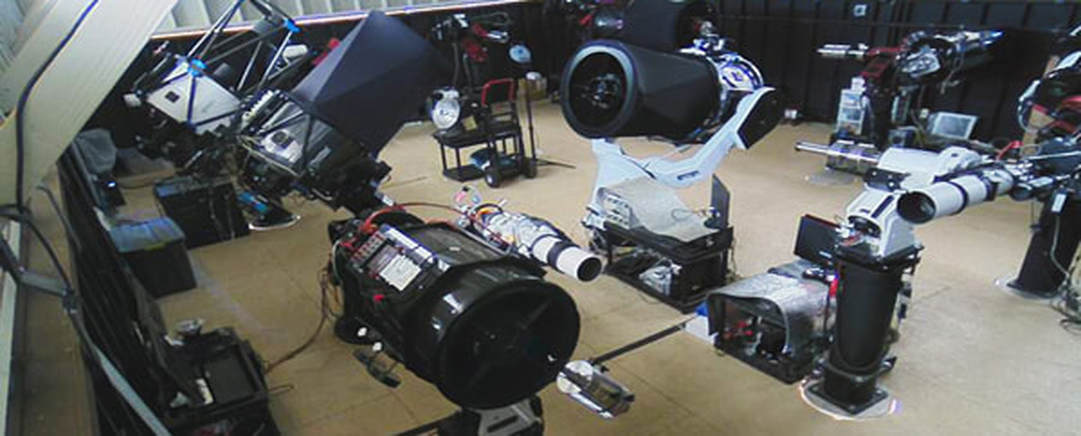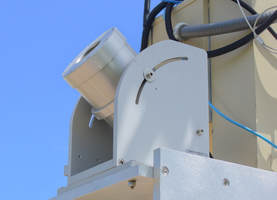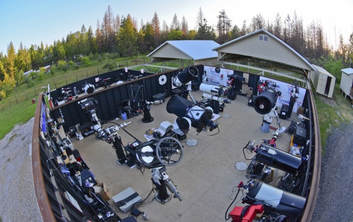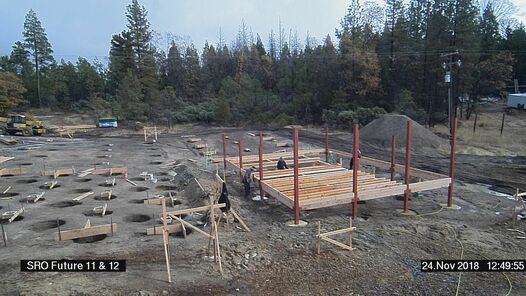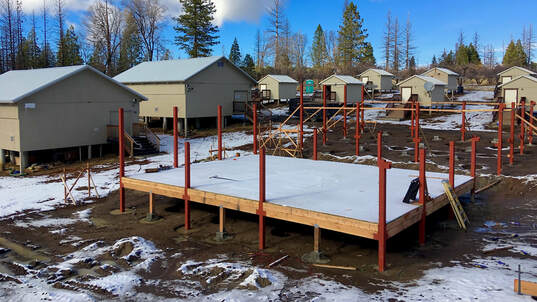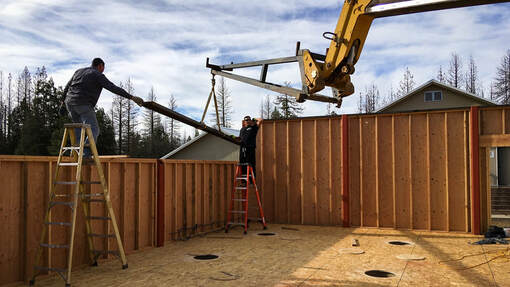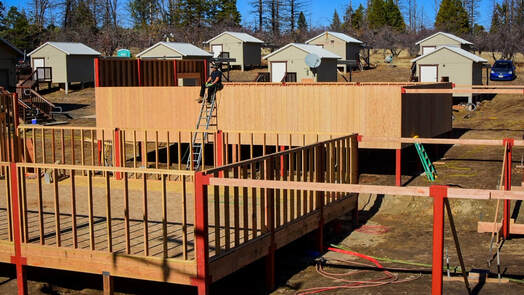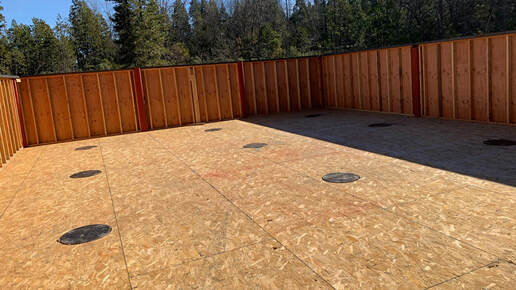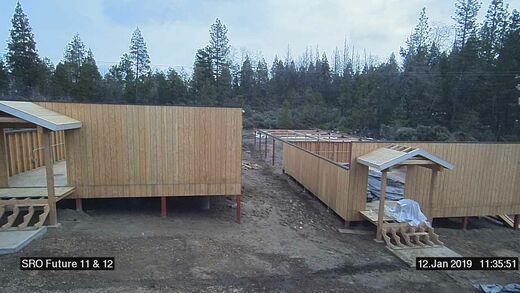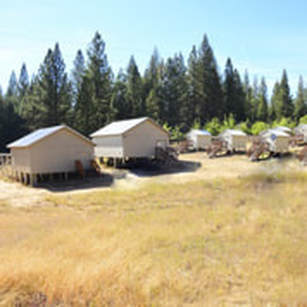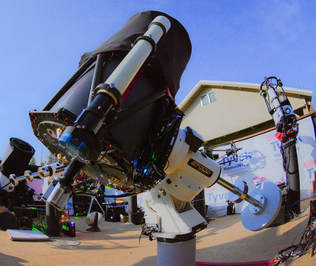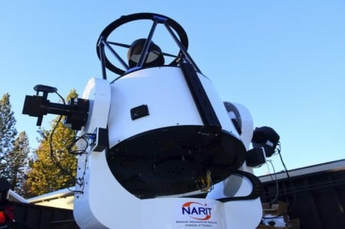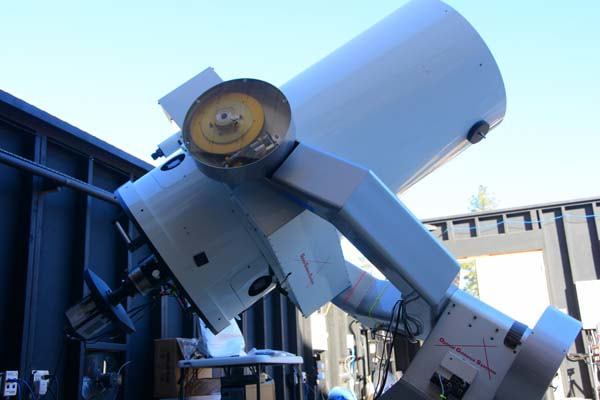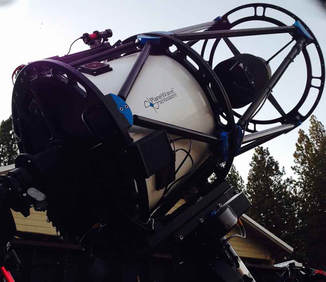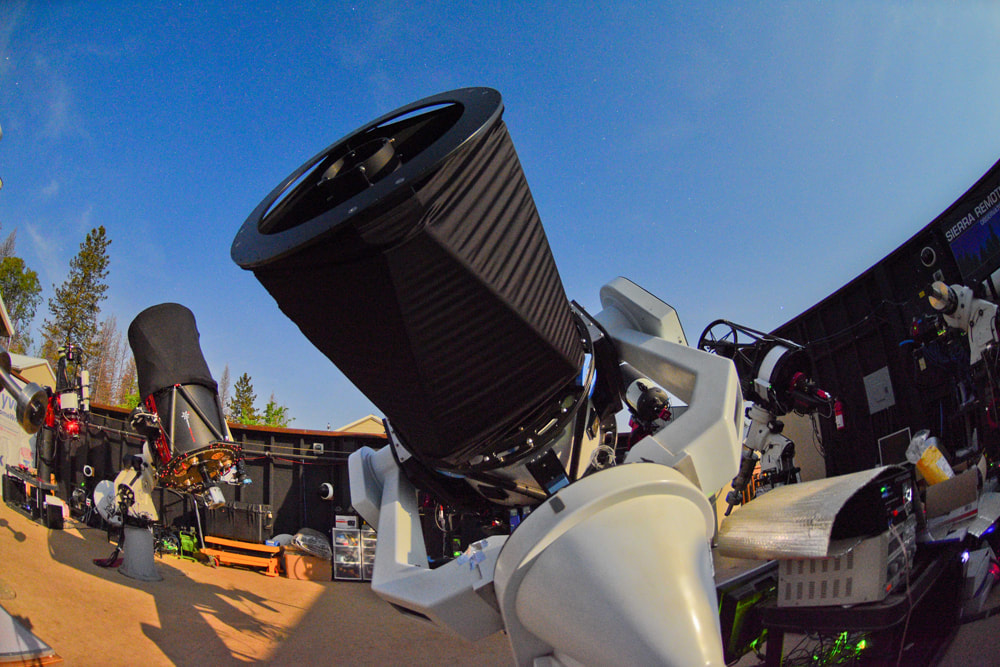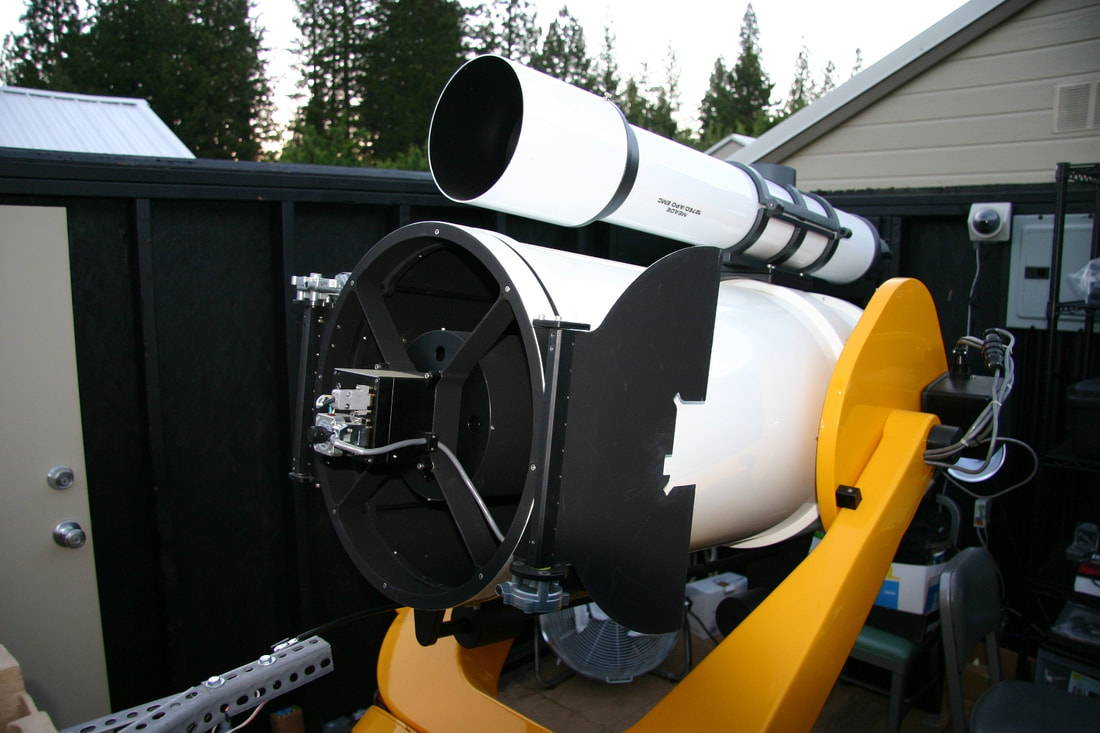Sierra Remote Observatories: An Ideal Site for Astronomers, Space Industry Professionals and Astrophotographers
An Introduction to Sierra Remote Observatories
SRO is a group of remote observatories located in the Sierra Nevada Mountains and dedicated to remote and robotic data acquisition and imaging. We will host your telescope. We have been operational continuously since 2007. We are uniquely located in the Sierra Nevada Mountains with excellent imaging conditions including:
• one arcsecond summer seeing
• dark skies at 21.78 mag/sq arcsecond V band
• a very low incidence of thunderstorms
• no summer monsoons
• average wind speeds of only 1 mph
• maximum wind gusts averaging only 10 mph
• an average of 290 clear nights per year.
We have easy access, being only one hour from the Fresno-Yosemite International Airport and 4 hours from Los Angeles, by car. We have robust, secure and fast fiber optic internet with satellite back up and network redundancy and security. Roof control, opening and closing, is based on on-site live weather telemetry with our clients having access to roof position files so they can optimize their imaging time. Our clients include astrophysicists, space industry professionals, astronomical institutes and advanced amateur imagers. Contact us if you have any questions or if you are looking for a unique site to place your telescope.
Read More
• one arcsecond summer seeing
• dark skies at 21.78 mag/sq arcsecond V band
• a very low incidence of thunderstorms
• no summer monsoons
• average wind speeds of only 1 mph
• maximum wind gusts averaging only 10 mph
• an average of 290 clear nights per year.
We have easy access, being only one hour from the Fresno-Yosemite International Airport and 4 hours from Los Angeles, by car. We have robust, secure and fast fiber optic internet with satellite back up and network redundancy and security. Roof control, opening and closing, is based on on-site live weather telemetry with our clients having access to roof position files so they can optimize their imaging time. Our clients include astrophysicists, space industry professionals, astronomical institutes and advanced amateur imagers. Contact us if you have any questions or if you are looking for a unique site to place your telescope.
Read More
What's New at Sierra Remote Observatories
|
Rapid Growth at SRO
When SRO saw first light in 2007 there were 8 individual observatories with only two initially in use, those two being used by the original founders of SRO, Keith Quattrocchi and Mel Helm. With SRO's excellent seeing conditions we were producing high quality images and within months the 8 observatories were leased with requests for more space. As a result we put up our first multi-telescope observatory, designed to house up to 14 telescopes. Within a few years that building filled and a second building was constructed. It too quickly filled. As a result we decided to put up two buildings, both of which are currently under construction. You can read about these buildings in the article below. |
New Cyclope Seeing Monitor
Our Alcor Systems Cyclope Seeing Monitor was recently installed and continues to demonstrate 1 arcsecond summer and 1.2 arcsecond winter seeing at SRO. The Cyclope seeing monitor is used world wide and is an industry standard. All of our seeing data statistics are from data collected over 3- 5 years and includes hundreds of thousands of data points. Seeing is typically sub arcsecond after midnight. Read More |
Infrastructure Updates at SRO
At SRO we are continually improving and updating the infrastructure that allows uninterrupted data collection and imaging. We have fast fiber optic internet, satellite internet backup and secure router connectivity with redundancy. SRO has full time technical support. Most problems can be fixed on site or shipped out and replaced. Read More |
New Multi-telescope Buildings Under Construction
On November 3rd, 2018 we began construction of two large custom designed multi-telescope buildings at SRO. We are constructing two, not one, to make sure we have available space for those interested in the future. These buildings are 40 x 30 feet with 10 foot ceilings. There is nearly 10 feet of space between each telescope. This allows us to easily handle larger telescopes, such as 28" or 30" telescopes in equatorial or Alt-Az configurations. Although we can accommodate smaller telescopes, the observatory was designed to handle larger telescopes. At SRO we have seen a clear trend towards 24", 28" or larger telescopes, as we've seen a higher proportion of astronomers and space industry professionals at SRO. Also, as the infrastructure update (see article above) details, we have endeavored to streamline and modernize the infrastructure of SRO. We now have fast fiber optic internet, improved and standardized roof control, emergency satellite internet backup and improved security. We also now have two full time technicians on site 7 days a week with help available 24 hours a day. Our goal at SRO has always been to build a site which is trouble free and seamless as possible, so our clients can focus on unencumbered imaging and data acquisition.
Selected Images of the New Construction of the Multi-telescope Observatories
|
Early Construction of Building 11 and 12
Floor joists in place for building 11 and the 6 foot deep dugouts for the telescope and foundation piers completed for building 12. Construction is steel and wood with a roll off roof design. With average wind speeds of 1 mph, the roll off roof design is ideal for SRO. Note the building is elevated off the ground for even air flow. The floors are all wood to decrease evening thermal contamination that occurs with concrete floors. |
New Construction with SRO in Background
In this image we see the early construction of building 11 and 12 with the remainder of SRO as the backdrop. At SRO there are currently over 40 telescopes in operation, some operational since the observatory's first light in 2007. Our clients include astronomers, space industry professionals, astronomical institutes and universities, as well as advanced astrophotographers. We take pride in the depth and diversity of our clients, spanning the gamut of from scientists and space industry professionals to amateur astrophotographers. |
|
Walls Completed for Building 11 and 12
In this image the wall the height of 10 foot can be appreciated. The construction workers are getting ready to put down and weld the main rails, on which the roof will roll. As can be seen, much of the wall (a 4 foot high section) will retract with the roof, increasing the north and south horizon views (right and left in this image). The telescopes are set back an extra foot to improve the horizon view to the west, where the wall is highest. All horizon views are better than 30 degrees. |
Further Construction of Buildings 11 and 12
The wood and steel construction technique at SRO can be appreciated in these images. As noted, the floors are wood and not concrete, in order to decrease evening thermal contamination. The roll off roof design is ideal at SRO where the average wind speed is 1 mph, making the use of a dome unnecessary. The total height from the floor to ceiling is 10 feet, making it possible to accommodate larger telescopes. |
|
Steel Base Plates Embedded in 6 Foot Deep Concrete Piers
At SRO the steel plates to which the telescope piers attach are custom built by Ross Engineering, located 20 minutes from the observatory. These plates are made of 1 inch thick solid steel with J-bolts on the bottom. The J-bolts and bottom of the steel plates are embedded in the underlying concrete pier (which extends 6 foot deep). The bolt pattern is both SRO proprietary and Software Bisque. We understand that having a solid foundation is critical to serious data acquisition. |
Most Recent Image of Buildings 11 and 12
When completed these buildings will be 40 x 30 foot in size and able to house 12 telescopes, including larger 24", 28" and even 30" aperture telescopes. These buildings will have fiber optic internet with secure VPN connections. Roof control has been improved and standardized. There are two full time technicians on site daily with emergency 24/7 technical support available. We have designed our infrastructure so our clients can focus on data acquisition and imaging. |
Images and Contact Information
|
The original eight 10 x 12 foot roll-off roof observatories and the two newer large multi-telescope buildings. A new third and fourth multi-telescope building will be constructed by fall or winter of 2018.
The Astronomical Telescope of the University of Stuttgart (ATUS) was established by the University's Institute of Space Systems with support of the Stratospheric Observatory for Infrared Astronomy (SOFIA) and funded by the DLR Space Administration.
The National Astronomical Research Institute of Thailand's (NARIT's) 0.7 meter Planewave.
The Korean Astronomy and Space Sciences Institute (KASSI's) 24" OGS. They are conducting polarimetry of the moon's surface.
|
The SRO newsletter is sent out semiannually. Our goal is to keep clients and interested professionals aware of changes, updates and projects at SRO. Feel free to contact us by phone or email at any time and with any questions you may have. Our phone numbers and email are listed below : Contact Information: Corporate Address 1865 E. Alluvial Ave, Ste 102 Fresno CA 93720 Phone: 530-401-0643 [email protected] Observatory Location: Auberry, California General Inquiries: [email protected] Founder, and Observatory Manager Mel Helm [email protected] Founder, New Observatory Projects and Marketing Manager Keith Quattrocchi [email protected] 530-401-0643 Founder, Finance, Contracts & Human Resources Manager Anna Bator [email protected] Technical Support: Evan Cornelson [email protected] & Sam Miller [email protected] Website: www.sierra-remote.com |
The iTelescope.Net's 24" Planewave CDK.
Dick Post's 24" PlaneWave CDK on a Mathis Fork Mount. Dick Post is an advanced amateur astronomer and a member of the AAVSO.
Dr. Fred Ringwald's 16" DFM Ritchey-Chretien Telescope. Dr. Ringwald, an astrophysicist at Fresno State University, has published dozens of peer reviewed articles on cataclysmic variables with data from SRO.
|

